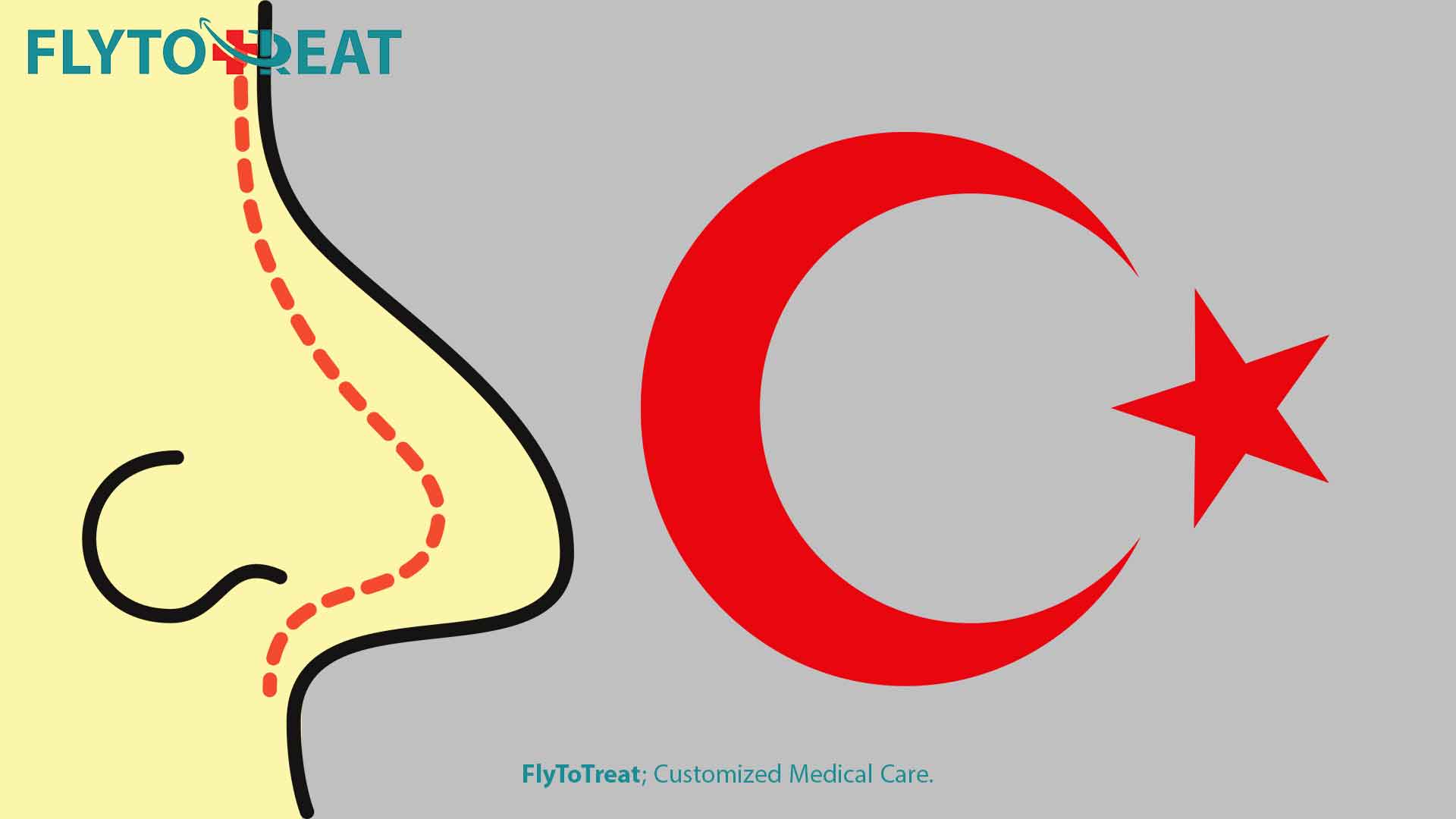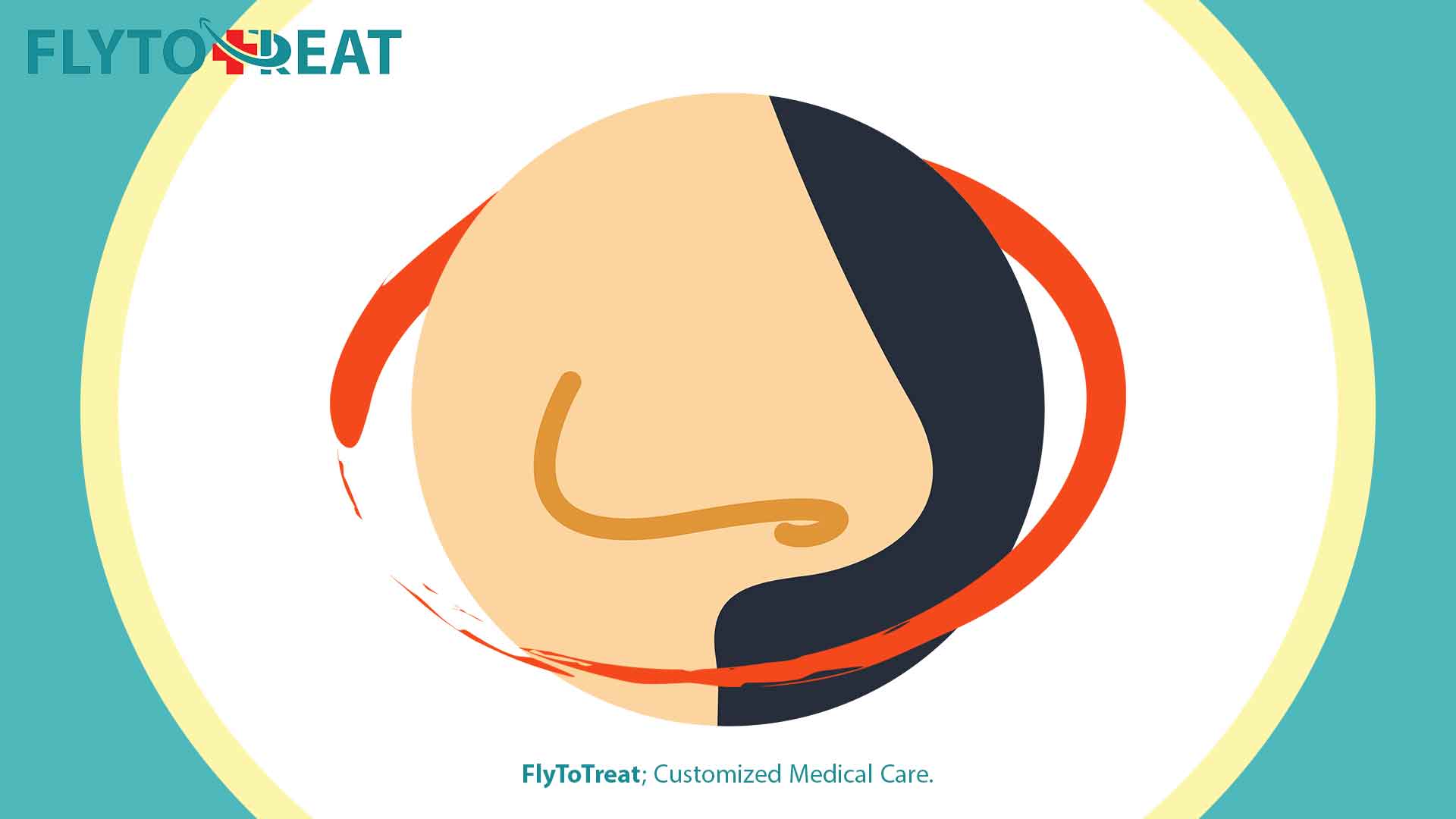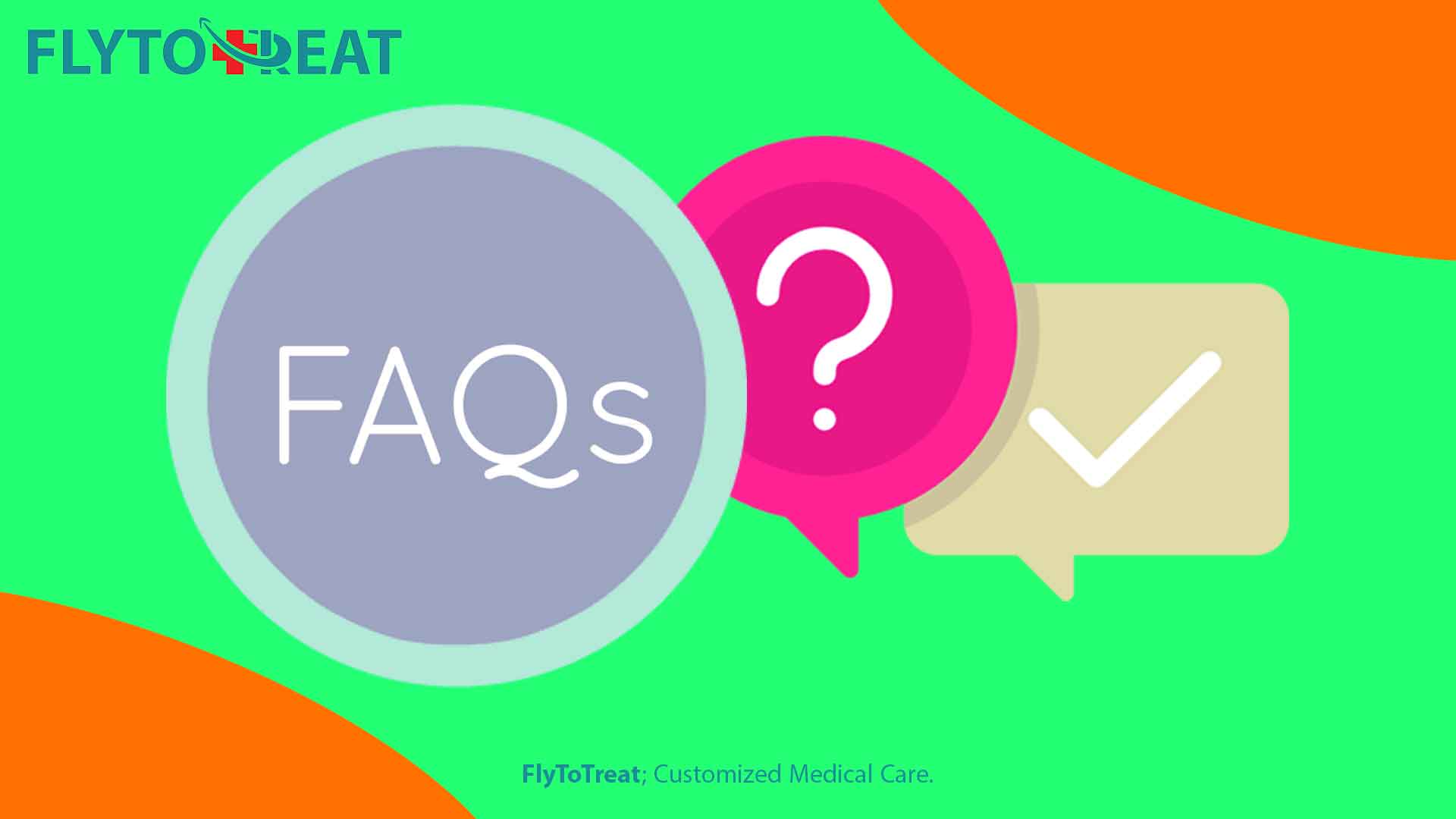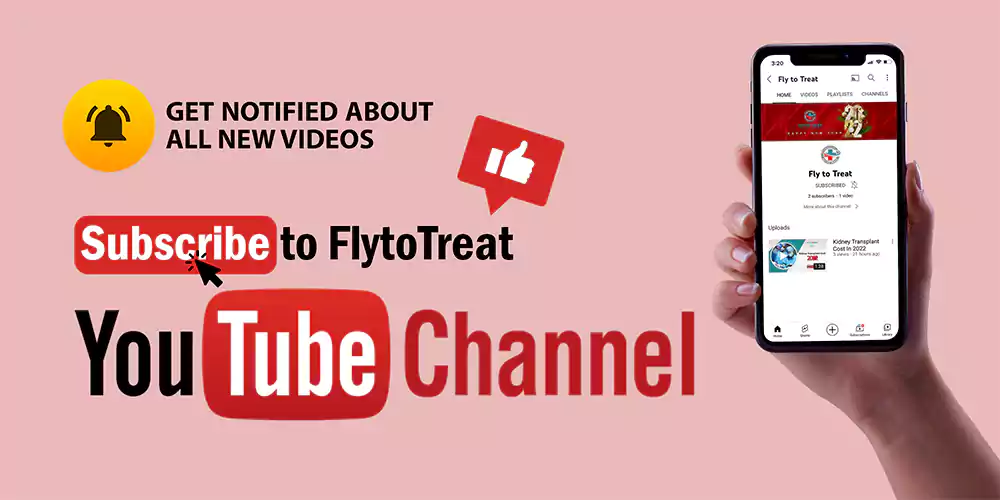
Rhinoplasty in Turkey
What Is Rhinoplasty?
Rhinoplasty, also known as "nose job" or "nose surgery," is the most challenging procedure. This surgery requires a plastic surgeon with the highest artistic ability and excellent surgical technique. Rhinoplasty in Turkey is one of the most popular medical tourism destinations in the world.
Even though a nose job is a delicate procedure, rhinoplasty is the most popular facial aesthetic surgery in Turkey, with plastic surgeons aiming for predictable results that will last the patient's entire life.
This surgical procedure reshapes the nasal skeleton, changing the underlying structures and improving the nose's form and function. Some patients have a nose job to balance their nose and the rest of their facial features. In contrast, others take advantage of this surgery to breathe deeply and calmly.
Because therapeutic job surgery necessitates a combination of medical procedures and high-quality care, the surgeon plans the approach to a nose job in Turkey based on the patient's needs and expectations.
Approaches to Rhinoplasty in Turkey
When you choose rhinoplasty in Turkey, the rhinoplasty surgeon performs functional or aesthetic plastic surgery which entails improving respiratory function or developing the morphology of the nose.
The surgeon uses various techniques to improve or modify the anatomic divisions of the nose. Because each patient's nose is different, the procedure should be tailored to their specific needs.
Depending on the range of views and applications, these surgical operations are handled using open (external) or closed (endonasal) approaches. To determine the best nose job surgery approach in Turkey, the nose job surgeon will evaluate the nasal dissection, personal characteristics, and facial aesthetics.

Tables of Candidacy
-
Large Nose
Your nose may appear very wide when viewed from the front, and this width could be caused by the bony part of the nose, the nose's tip, or the nose base.
The widths in the upper bone part of the face give the face a pleasing appearance. The two eyes appear to be separated by a great distance.
-
Unsightly Nose Tip
Too thin noses give an aesthetically unpleasant appearance and cause severe shortness of breath.
Nasal stricture may exist at the tip, in the middle, and in the upper part of the nose, or in all three parts together. When a person has nasal tip stenosis, it appears as if the nose has been clipped shut, resulting in an angry expression on the face.
-
Hump or Bump on the Nose Bridge
The correction of arched noses is a common request among individuals seeking this cosmetic surgery. In some countries, an arched nose is quite common.
Men better have a straight nose ridge while fixing their arched nose. A straight nose can be fashioned in a minimal curve for women.
-
Nose with Asymmetric Nostrils
The nasal base and nostril shape are essential factors to consider during the planning and execution of cosmetic or reconstructive rhinoplasties.
An alarplasty technique surgically modifies the size of the nostrils by removing a small, wedge-shaped piece of skin to create more symmetrical nostrils. It can be done alone or in combination with a nose job.
-
Oblique Nose
An oblique nose is a challenging surgery problem that necessitates a great deal of technical expertise, experience, and competence. With the help of a good surgeon, a significant improvement is frequently attainable.
-
Drooping & Droopy Nose Tip
In Turkey, you can see lots of people with droopy nose tips. The tip of the nose tends towards the upper lip, and the nose appears long. The drooping gets more noticeable when you laugh.
The ideal angle formed by the top lip and the face should be 90-100 degrees, while this angle is less than 90 degrees with a drooping nose.
The most crucial reason that probably motivates you to correct the shape of your nose is that a sagging nose gives the impression of getting aged.
Types of Rhinoplasty
Before undergoing the surgery, you'd better know some technical information. Such as:
There are two types of nose cosmetic surgeries: open and closed procedures.
Your surgeon will consider all probable methods and proper purposes (including cosmetic and functional rhinoplasty and nasal congestion) to find the best one that works better for you.
- Cosmetic
Most people favor cosmetic methods to improve their beauty, such as lowering nose size, correcting a projection, changing the shape, smoothing a hump, giving volume to a flat bridge, or changing the size and shape of overly big nostrils.
- Functional
Functional rhinoplasty aims to correct a structural issue interfering with healthy breathing. In many circumstances, both the function and appearance of the nose can be addressed in a single procedure.
- Revision
Revision rhinoplasty is for anyone who has had rhinoplasty one or more times and wants more improvement in the appearance and function of their nose.
- Ethnic
Ethnic rhinoplasty is an advanced form of nose surgery. This method makes the nose fit the patient's face without altering the patient's ethnic characteristics.
- Non-Surgical
It is possible to achieve satisfactory results even without surgery. Usually, clients who seek modest changes desire this method.
Dermal fillers can subtly lift the nose tip, flatten a minor hump, or make a more beautiful nose tip if it has depressions or a pinched appearance.

Open vs. Closed Rhinoplasty
-
Open Rhinoplasty
The structural framework of the nose is obtained by opening a small incision from the connecting part between the nostrils during this method. The significant advantage of an open nose reshaping procedure is that it allows the plastic surgeon to see components of the nasal arrangements more clearly.
As a result, by performing open nose job surgery, numerous nose bone and cartilage frame components that contribute to nasal abnormalities such as size, shape, or angle can be altered, resulting in facial beauty.
-
Closed Rhinoplasty
Closed rhinoplasty involves incisions on the nasal layer in several areas to access various portions of the nose structure.
The nasal structure will not be exposed because of the inside incisions in the nose, limiting the surgeon's visibility. During this method, plastic surgeons utilize an endoscope to increase the point of view.
Plastic surgeons use it to treat breathing problems caused by nasal abnormalities such as nasal protrusions and unequal nostrils.
Recovery Time
You will be transported to the restroom once the procedure is completed, where you will spend the night. Any discomfort that may develop due to the procedure is managed with a medication prescribed by your doctor.
Furthermore, our surgeons will help you heal more quickly after your surgery and lessen the sight of your post-operative scars.
Even though everyone's recovery is unique, the following is a general outline of what to expect.
-
Day of Surgery
The procedure day will start early in the morning. You will be awakened early for surgery, given an anesthetic, and then returned to your hospital room after the surgery.
For the rest of the day, most patients prefer to rest and recover. The best position for healing is to sleep with your head elevated or relax in a reclining chair.
-
The Day After
You will be monitored for several hours after your surgery. Our surgeons are there to pay serious attention to your situation as much as needed. You will be free to be driven home once you have become alert and everything is in order.
-
One Week
After one week, it is time to remove the splint because the congestion has subsided. The maximum swelling lasts around three days and starts to fade by the end of the first week. Some people can return to work after a period of recovery.
-
Two Weeks
Most of the unpleasant congestion has subsided, and swelling has significantly decreased. Swelling is minimal, with slight bruising persisting in some cases.
-
One Month
When you look in the mirror, you can see the changes, and you could even find yourself smiling at yourself.
-
Three Months
The edema is vastly reduced, and improvements are beginning to show. Your reshaped nose is starting to resemble natural. You are now free to exercise, play sports, and run. Any harm to the delicate anatomy of your nose should be avoided at all costs.
-
Six Months
You may not pay much attention to your nose now that it is mostly healed. Now that you've become more accustomed to your new picture in the mirror, you probably feel more confident in your appearance.
-
One Year
After a year, your new nose shape is truly a part of you, stable and balanced. The incision site has faded to nearly invisible. For the most part, all reshaping and tweaking have been completed.

What Are the Risks of Rhinoplasty?
You have to consider choosing a clinic that follows the most stringent patient health and safety requirements and an experienced, board-certified facial plastic surgeon for this treatment.
It would be helpful if be aware of the possible risks:
- a blocked nose
- breathing difficulty for a few days
- a stiff or numb nose
- soreness, swelling, and bruising around the eyes for less than three weeks
- light nosebleeds for a few days
- excessive bleeding
- a blood clot in a vein
- infection
- an allergic reaction to the anesthetic
- damage to the cartilage wall between your nostrils
- a distorted sense of smell
How to Choose the Right Rhinoplasty Surgeon?
The most crucial part of a successful outcome is selecting the appropriate surgeon. While many plastic surgeons perform this kind of surgery, you should trust a surgeon specializing in facial plastic surgery. That is where you need FlytoTreats' help. FlytoTreat offers surgeons who have thousands of successful procedures and are known for their expertise.
What to Expect
-
Preparing for Surgery
When it comes to having the best surgery, we suggest you make the procedure much easier on yourself by observing some easy tips.
You need several weeks before the surgery to get prepared. This entails abstaining from alcohol and drugs, having a balanced diet, and drinking lots of water.
You may be asked to stop using some blood-thinning medicines or supplements to reduce excessive bleeding and speed your recovery. Several tests will be run to ensure that you are healthy enough to undergo surgery.
-
Anesthesia
Many people will have the surgery under general anesthesia, but others will simply need intravenous sedation and a local anesthetic. You and your surgeon will decide on the safest and most comfortable option for you.
-
During
As you'll be sedated, you will be completely unaware of what is going on during your procedure. The treatment takes several hours to complete, and you will most likely have no recollection of what happened.
Each treatment is individualized and may include bone and cartilage contouring, transplants, and other procedures to get the look you want.
-
After
When your operation is finished, you'll be taken to a recovery centre to regain awareness. You are not allowed to drive until you are completely alert, so a friend or family member can drive you home. Make plans to have someone accompany you for at least one day.

Frequently Asked Questions
-
What is the best country for rhinoplasty?
Turkey has now reached a point where it has a high level of plastic surgery tourism and has also established itself as a significant destination for plastic surgeons.
Thirty to forty percent of rhinoplasty patients are international. Of course, excellent deeds are carried out in other nations, but rhinoplasty in Turkey is the most profitable for the patient. Surgical procedures that are both cost-effective and high-performing are conducted here.
-
How much does rhinoplasty cost in Turkey?
This surgery is one of the most complicated treatments. It requires remarkable plastic surgical techniques and medical association techniques, so an experienced team is needed to significantly reduce the likelihood of complications during and after surgery. These items can increase the price of this operation.
As a result, it's critical to choose a clinic that has performed several surgical procedures with a reputable plastic surgeon at a reasonable cost.
The cost of a nose job depends on the details of the treatment plan, like preoperative tests, anaesthesia, drugs, and additional applications; Turkey has handled these responsibilities at a reasonable price. That is why Turkey is one of the most preferred destinations for a nose job.
-
Who is the best rhinoplasty surgeon in Turkey?
To be clear, all Turkish surgeons have had a great deal of success. While naming the most incredible surgeon is difficult, we can provide some advice. Examine the surgeon's quality before deciding on a surgeon. You can get ideas from their education, license, and documentation.
Turkish doctors are known for their talent to perform this procedure all over the world, and the clinics here are excellent as well.
-
Is Turkey good for rhinoplasty?
All the essential facilities for rhinoplasty operations in Turkey are prepared including equipped clinics and skilled surgeons.
It is the European country with the best opportunities in this regard. Rhinoplasty in Turkey is your most cost-effective option. One of the criteria for picking patients is that the treatments be completed in a short time and be 100 percent successful.
Thousands of patients who traveled to Turkey for plastic surgery have returned home happy. Turkey is the finest in this regard.
Conclusion
Your right to health and beauty is unalienable. It's no longer a dream to have your perfect appearance.
This surgery aims to give you a perfect appearance and end your sad days caused by facial dissatisfaction. In Turkey, you can conduct a safe, practical, and profitable operation.
Contact the pros at FlytoTreat in Turkey to arrange your initial appointment. You can ask any questions regarding the best way to prepare for the process, fees, or anything else you need to know. Flayto Treat comes with everything you'll need for a successful procedure.
MEDICALLY REVIEWED BY: Dr. Ali Bazazi
AUTHOR: FlytoTreat's team of Authors
13 May 2024 - Updated At: 13 May 2024
Related Articles
Comment





